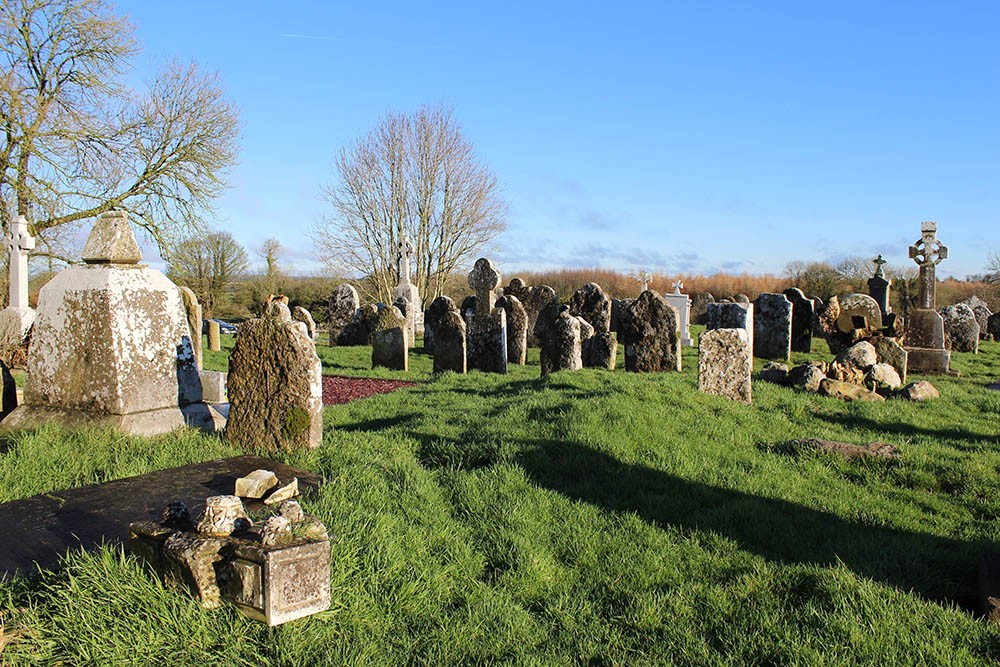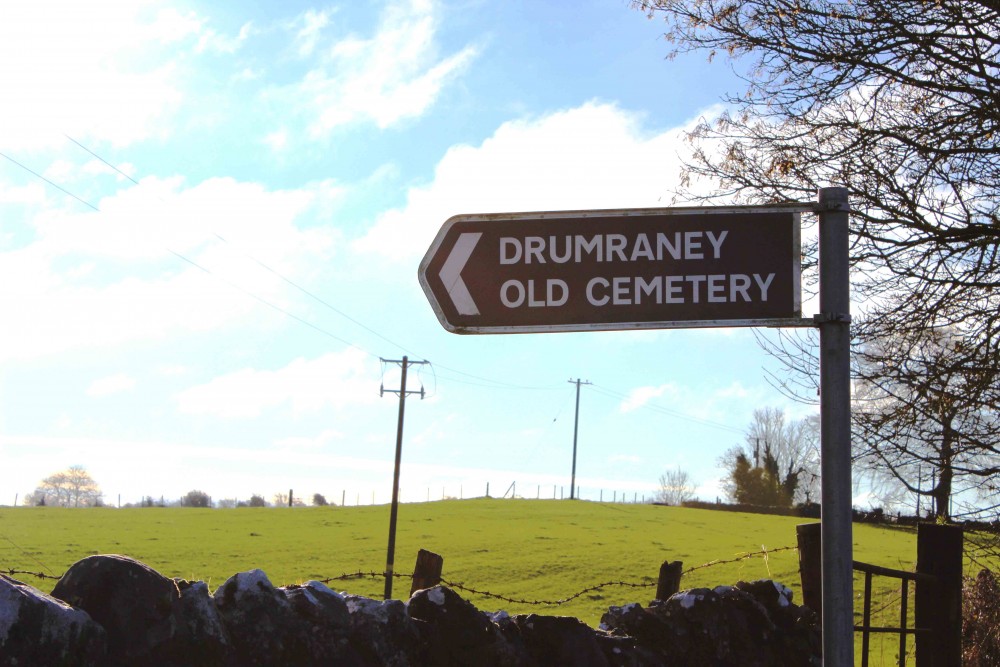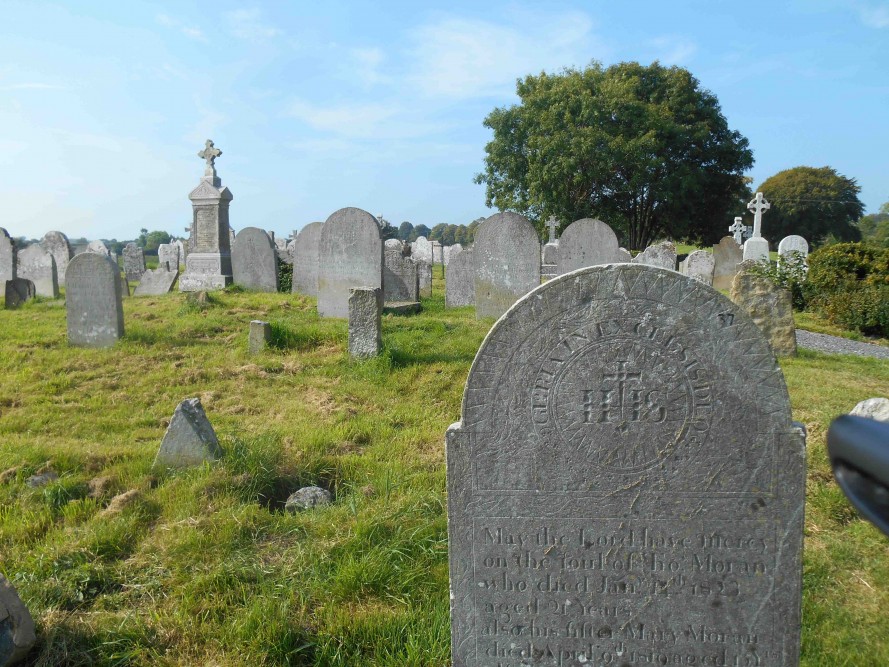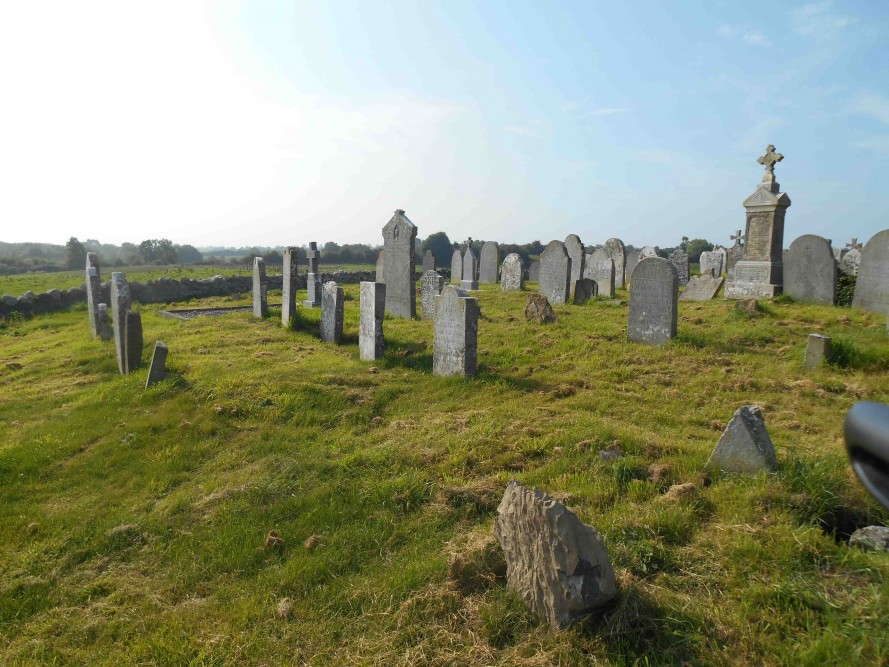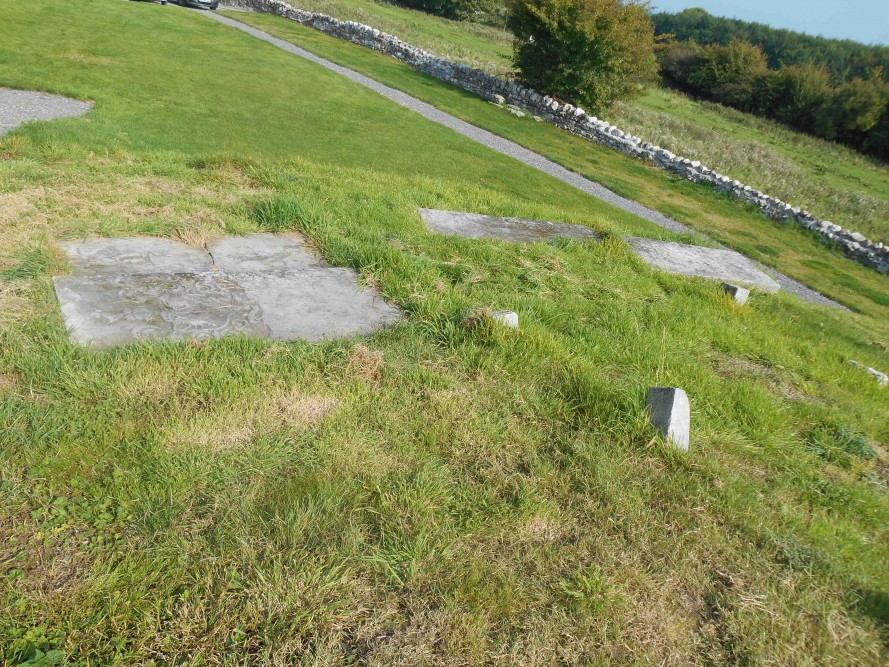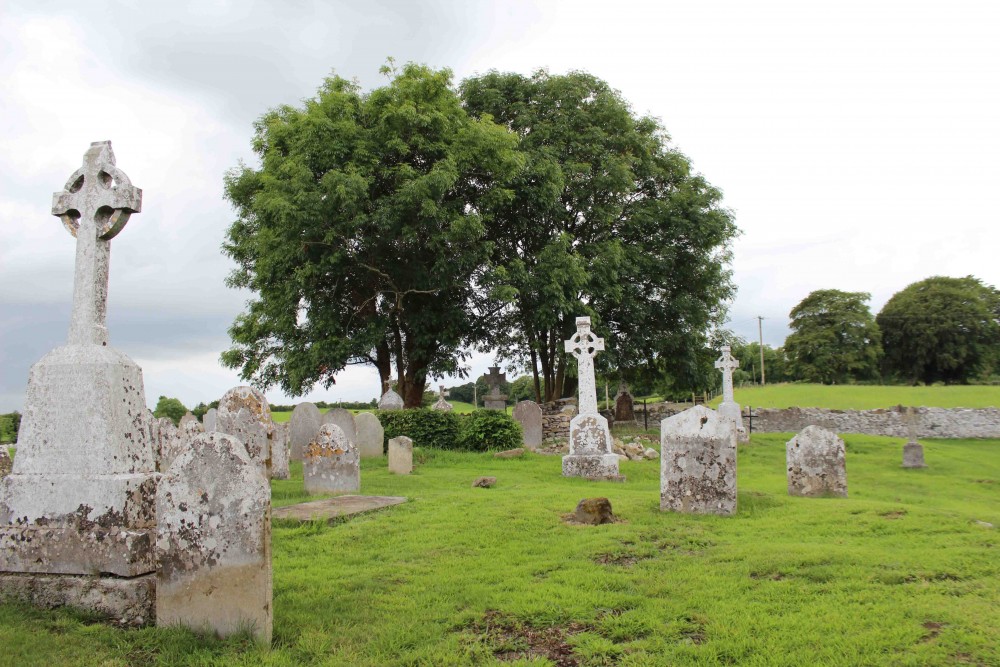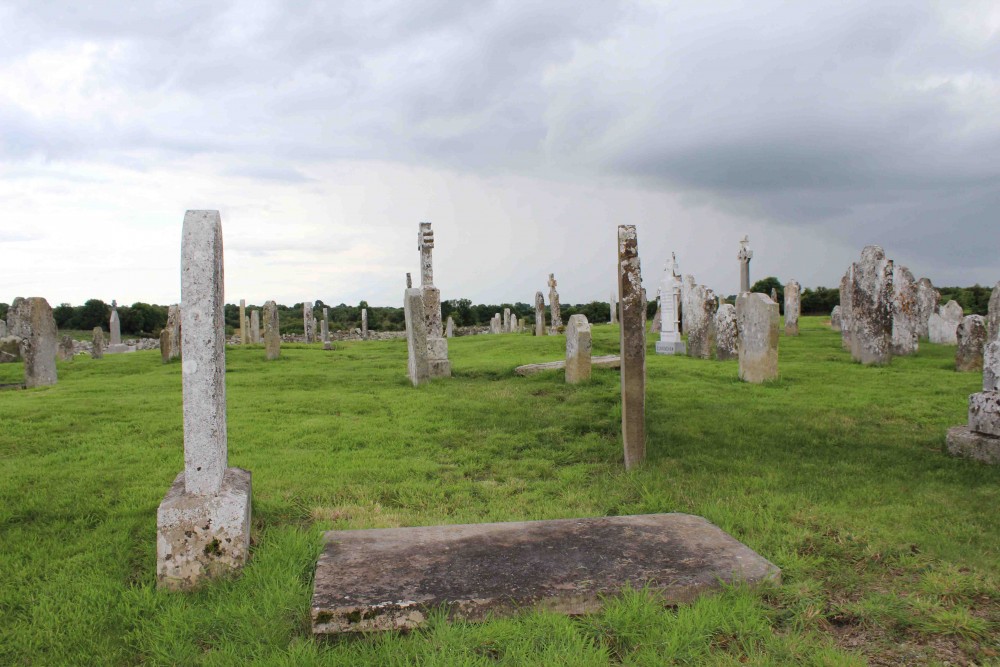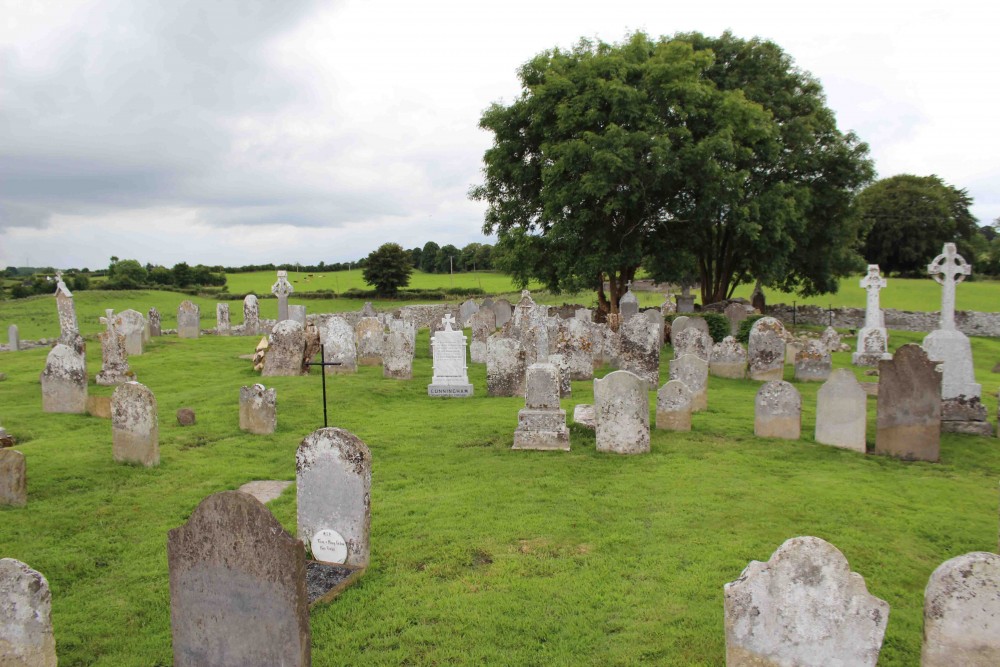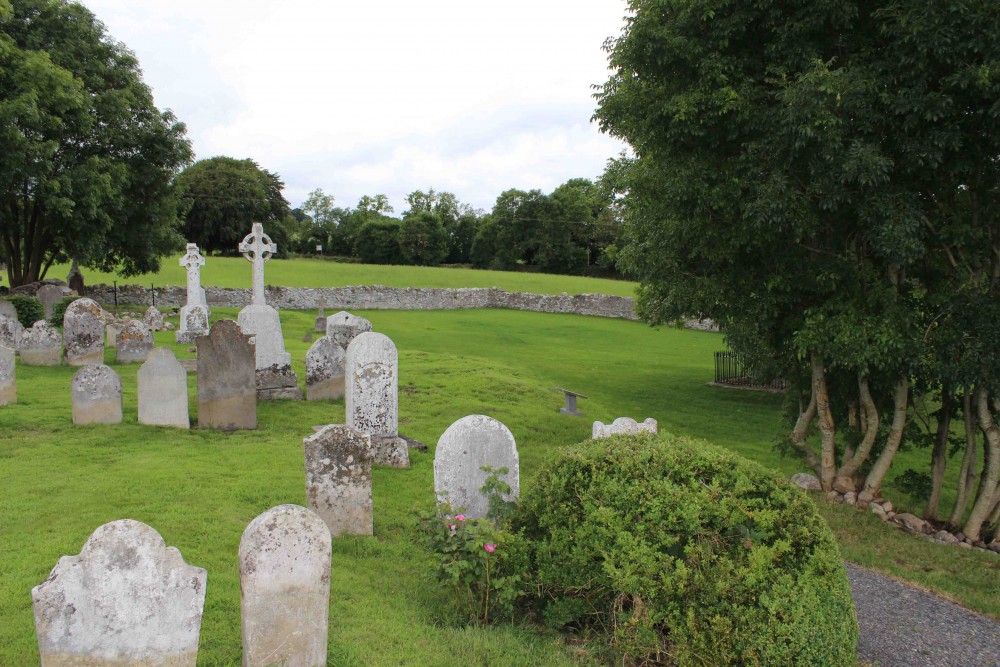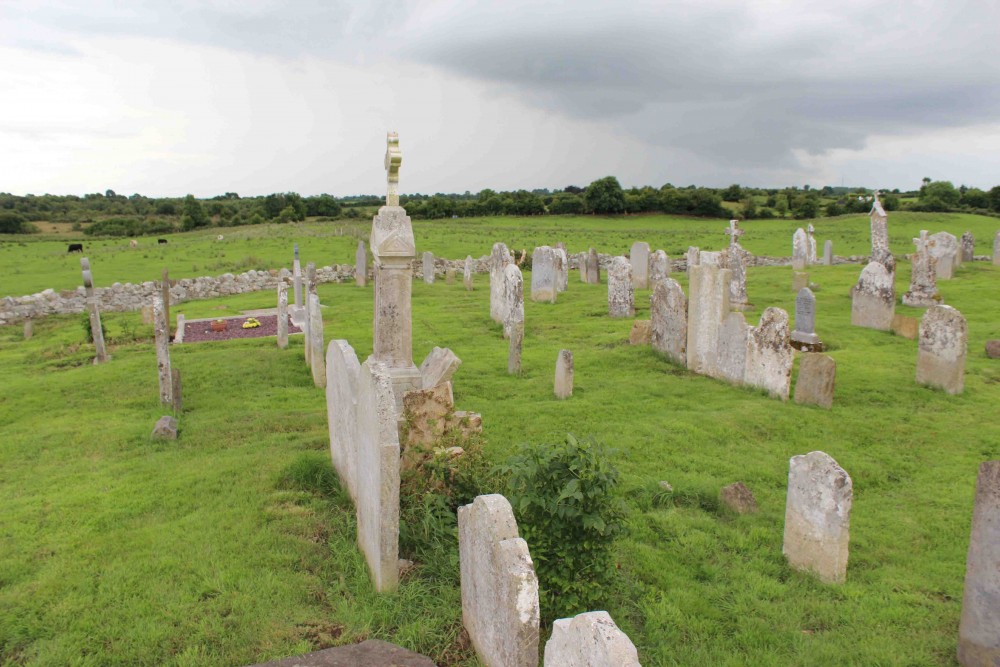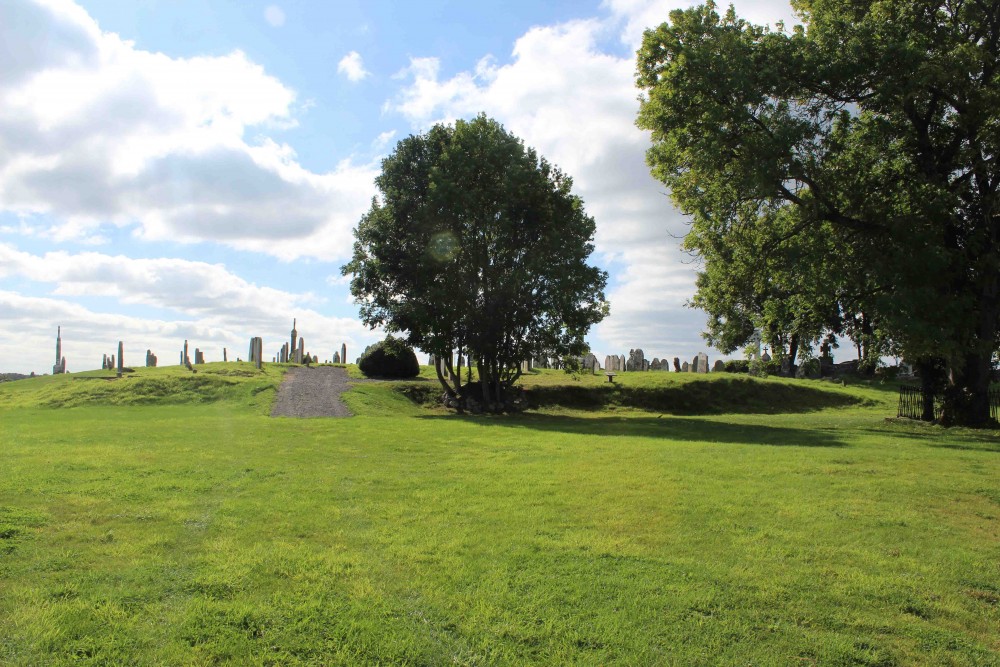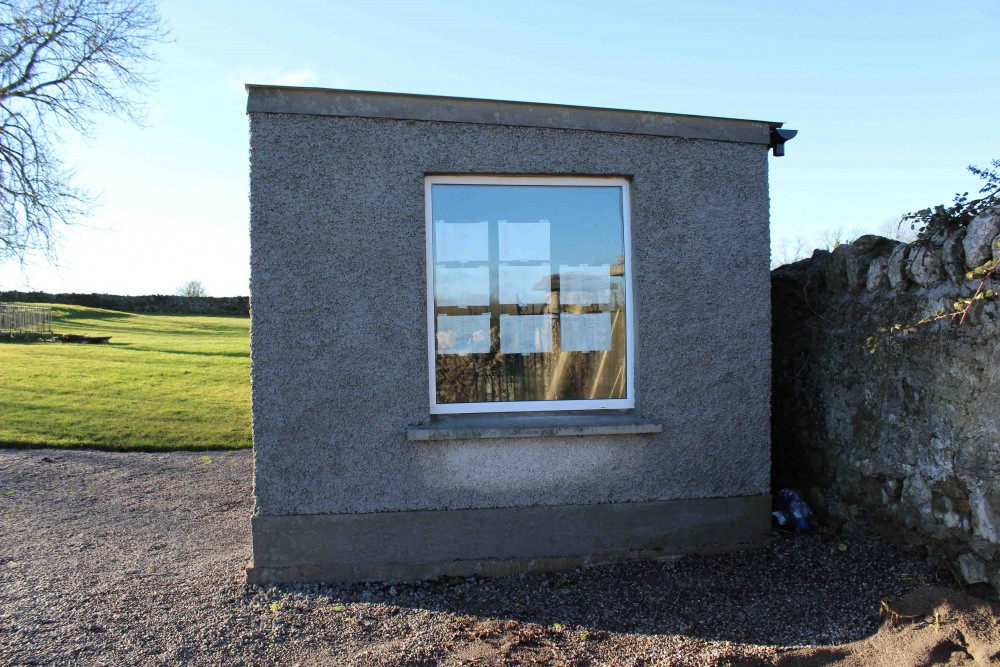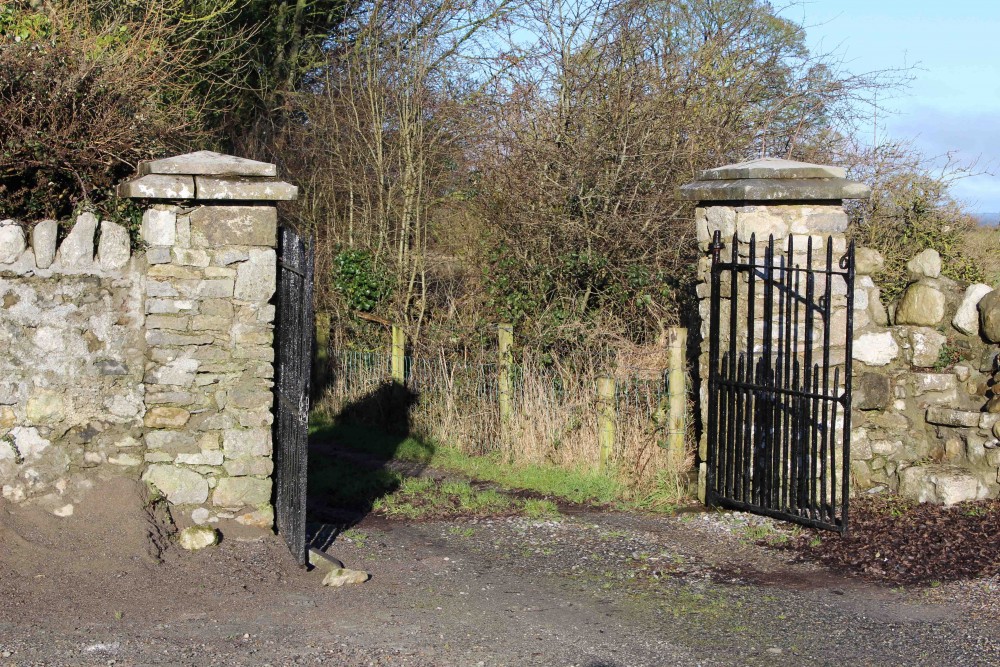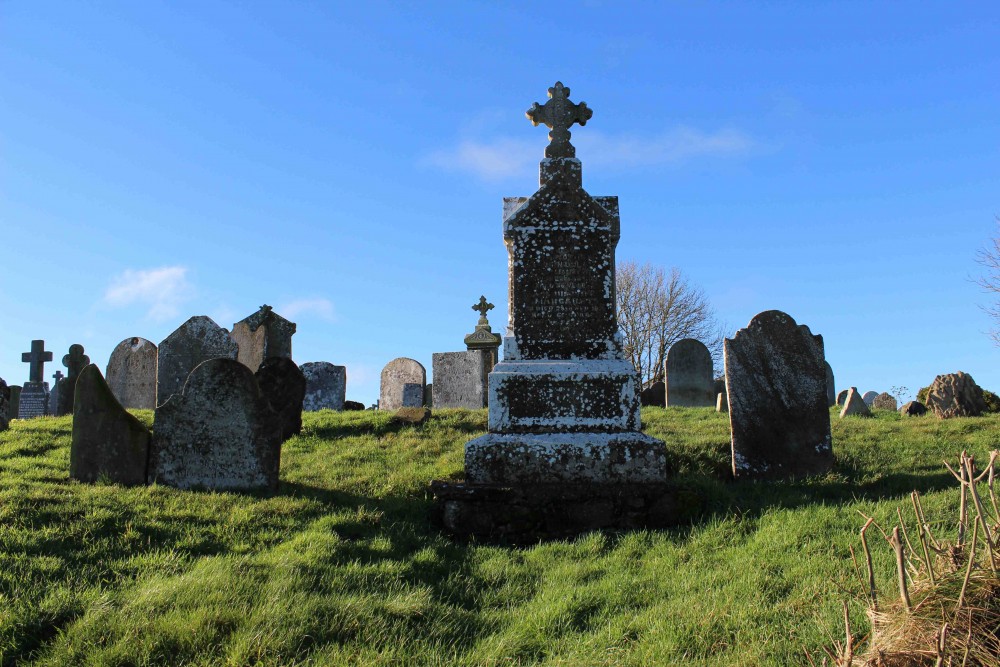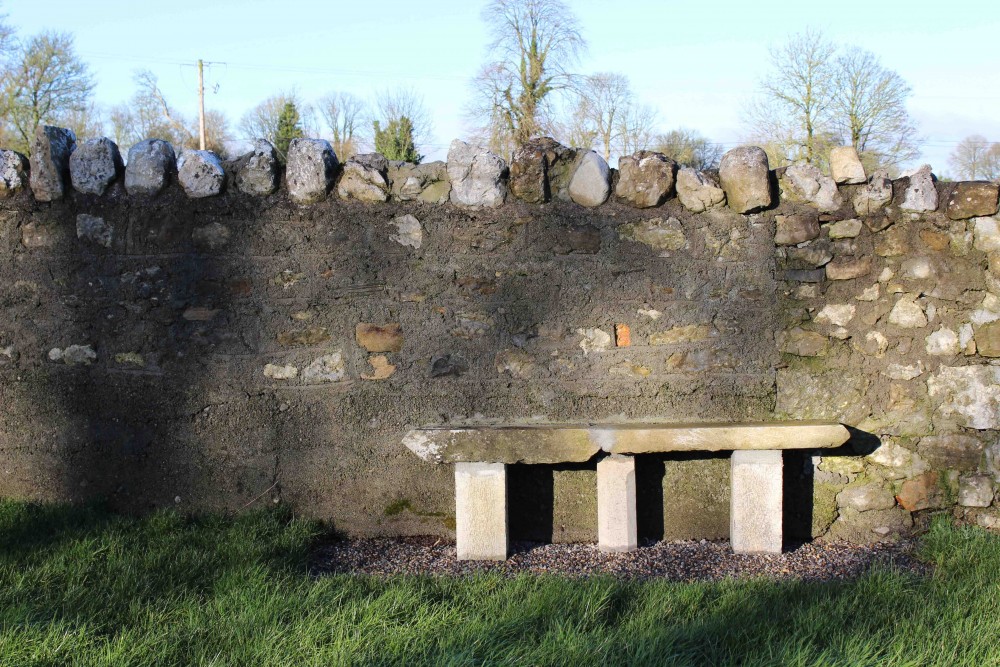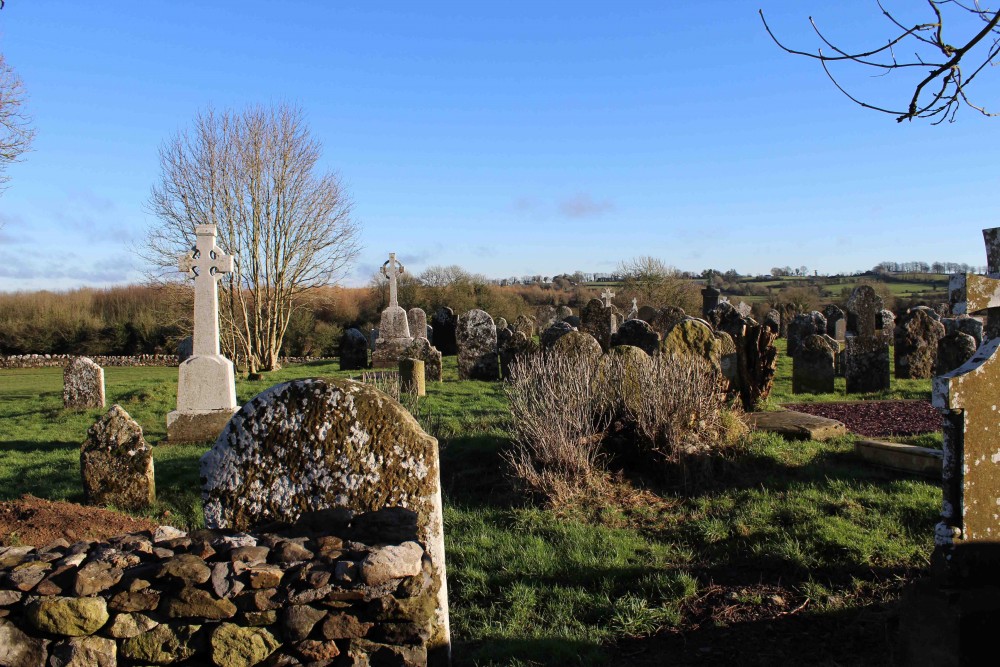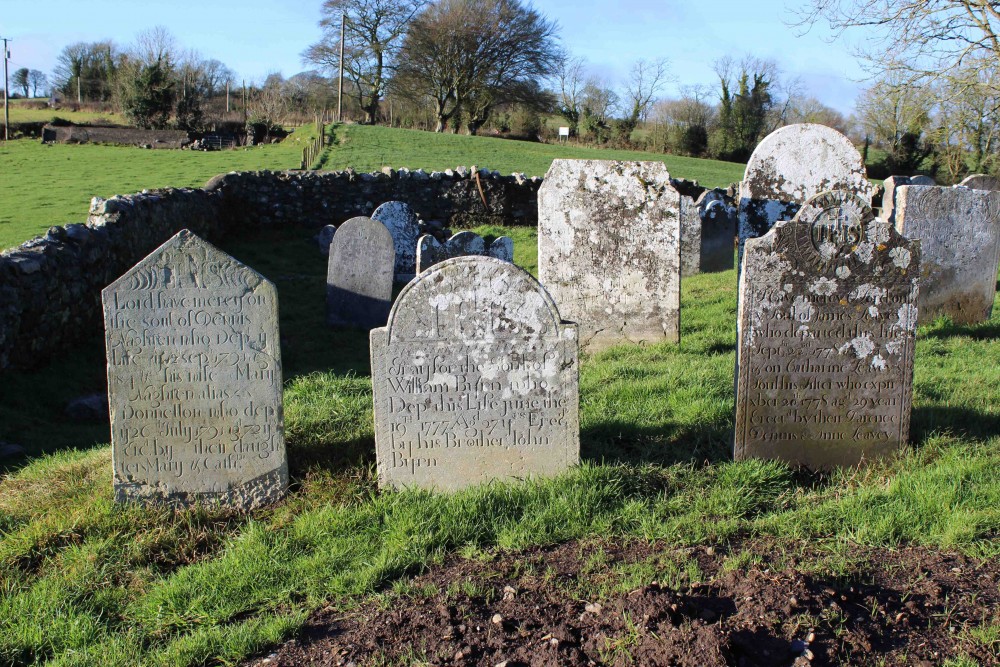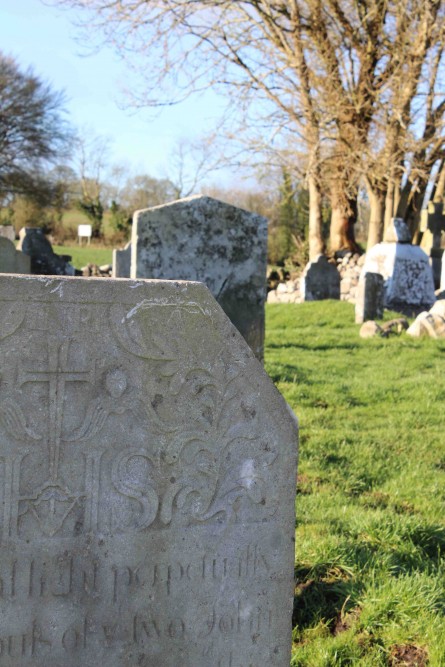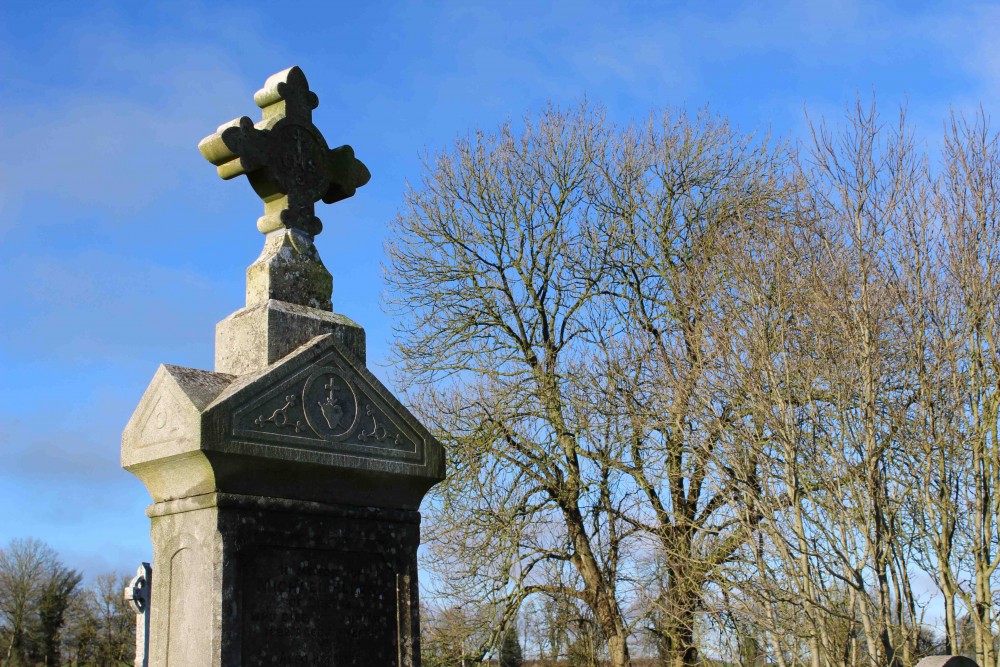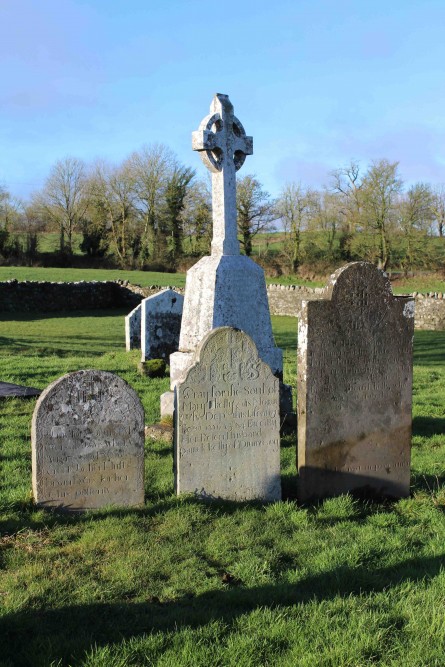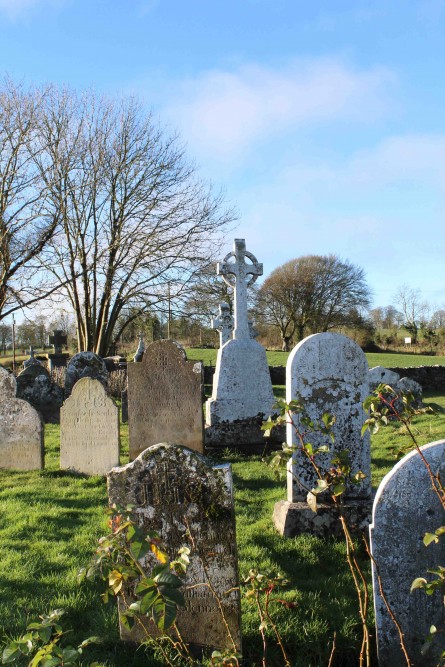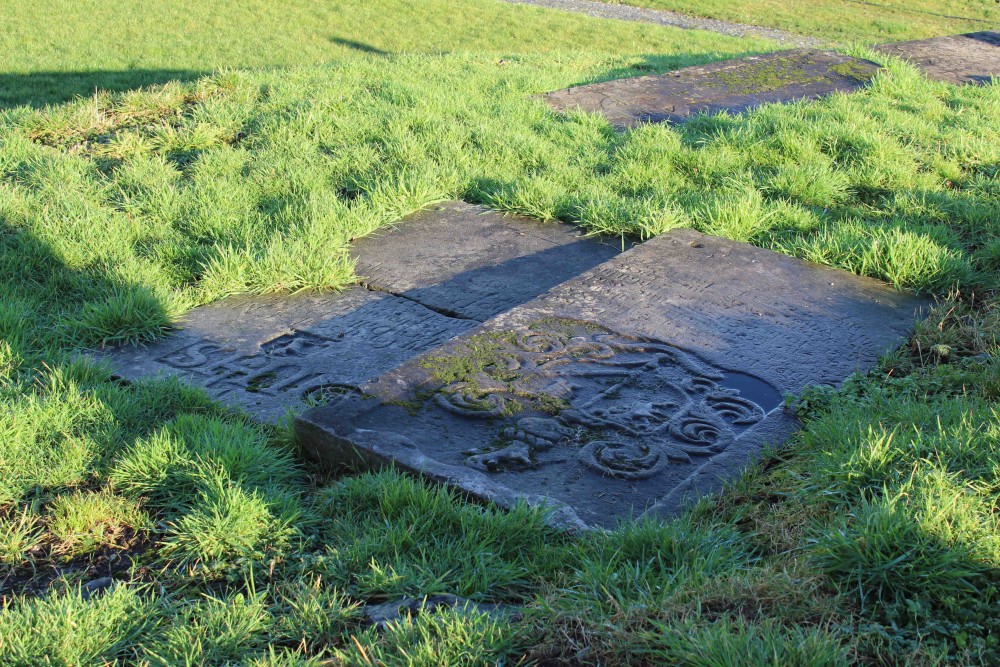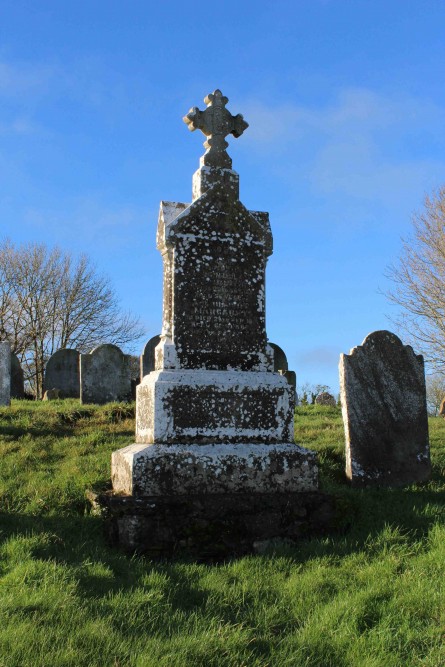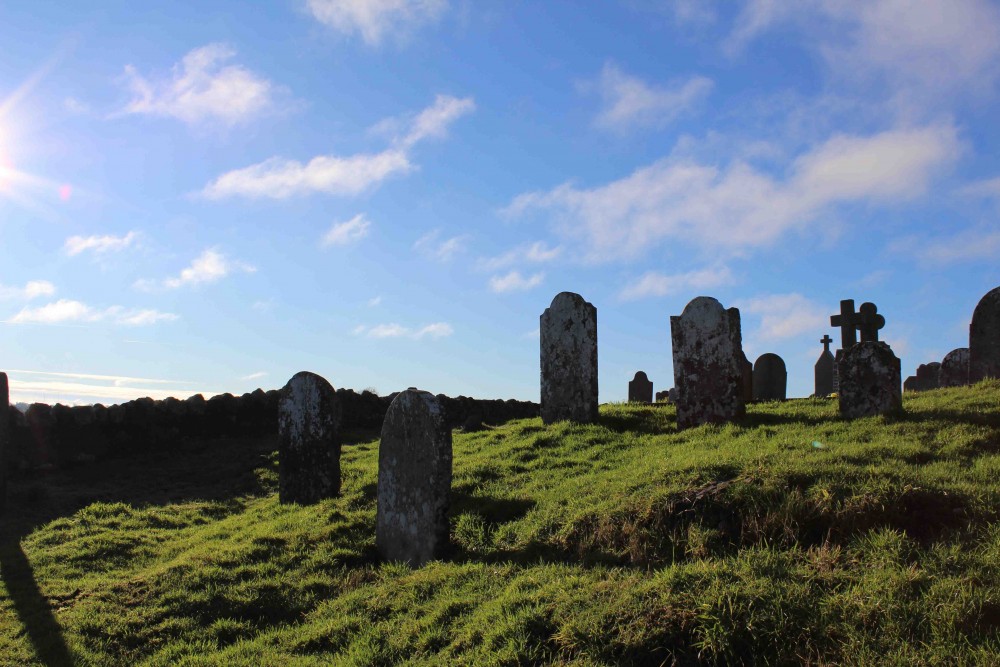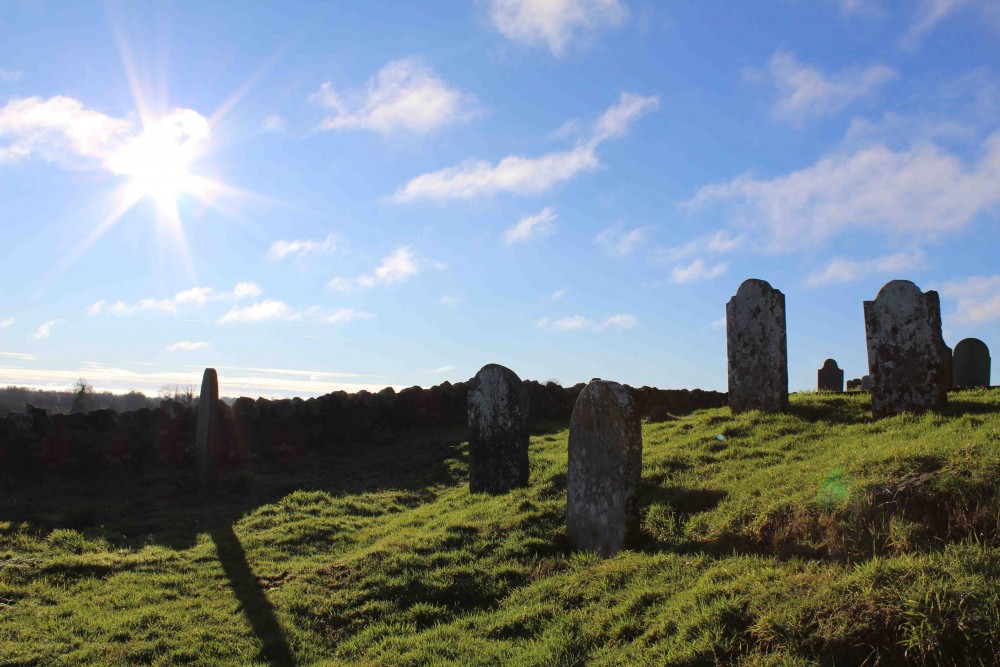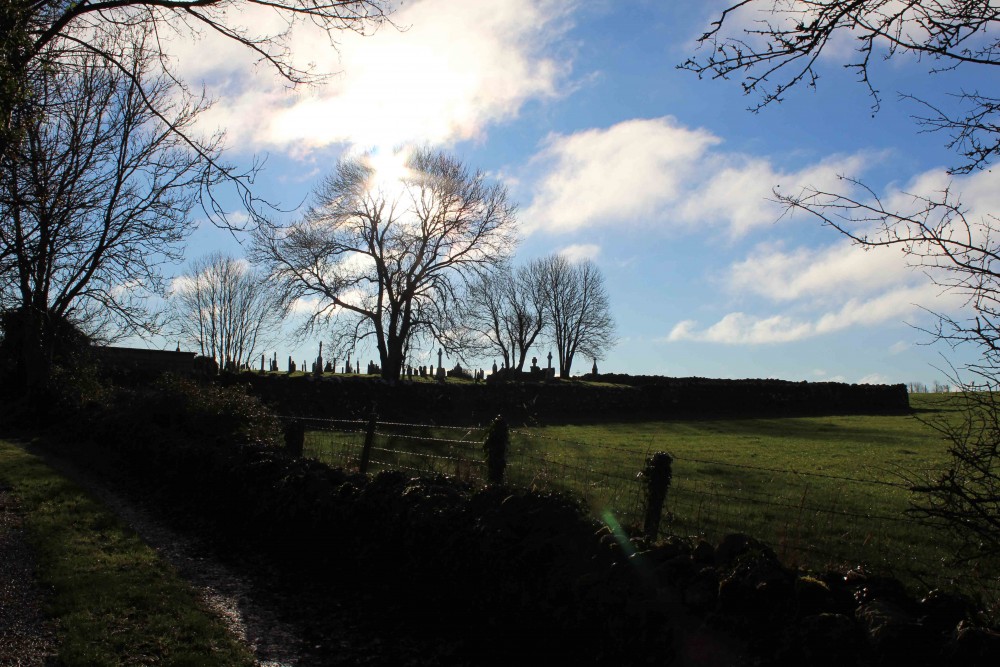The Old Graveyard
The Old Graveyard at Drumraney stands on the site of a monastery founded by St Enán around 588 A.D. According to the medieval Irish chronicle Chronicon Scotorum, St Enán died in 633 A.D. The Marytrology of Oengus records his feast day as 18 September, and a holy well dedicated to him lies adjacent to the graveyard.
The Chronicon Scotorum also mentions a Viking raid in 948 A.D.: ‘A raid was made by the foreigners over Druim Raithe, and they burned the church with one hundred and fifty in it.’ The same source mentions another raid by Brian Boru’s forces in 996 A.D.: ‘The guest-house of Druim Raithe was burned by the men of Mumu with three hundred people in it’.
In 1185 Sir Henry Dillon came to Ireland with Prince John. As well as the Norman motte opposite the graveyard, Dillon is also credited with building a church at Drumraney. Several papal letters from the fifteenth century make reference to St Enán’s Parish, Drumraney. For example, in 1440, Pope Eugene IV confirmed Maurianus Macgruayrcg in ‘the perpetual vicarage of St. Enan’s (Sancti Enani), Drumrane alias Drumreath’. Macgruayrcg had secured the vicarage through a gift of ‘cows and money’ to the local lay patron, Peter Dillon.
The Early Modern Period
Following the Reformation, the church and glebe lands at Drumraney came into the possession of the Protestant Church of Ireland. Healy’s list of Protestant clergymen for the parish commences in 1560 with Bryan O’Connoyle. The church and thirty-two Irish acres of glebe lands at Drumraney were recorded in the Cromwellian surveys of the 1650s as belonging to the Church of Ireland. Prior to the nineteenth century, however, it would appear that the Protestant clergymen were non-resident.
Meanwhile, the great majority of the local population remained Catholic and they were ministered to by a succession Catholic priests. In 1690 King James II presented Rev. James Dillon to the vicarage of Drumraney. Under the subsequent penal legislation, Rev. James Dalton was registered as pastor of Drumraney and Ballymore in 1704. At that time, as mentioned by Cogan, mass was said on Sunday mornings at the ‘Foggy Hollow’ and other times at Killininy. Eventually, a Catholic chapel was erected on the site of the current church. The latter was built by Rev. Thomas Guinan in 1857 at a cost of £1,100.
In The Post-chaise Companion published by William Wilson in 1786, brief mention was made of the ancient church ruins which stood in the Old Graveyard: ‘Two miles and a half beyond Ballimore, on the L[eft] are the ruins of a church’.
The Church of Ireland
In 1811 a Protestant church was erected on this site. This building measured around 55ft x 28ft, with the tower standing 42ft high. In 1827 the present-day boundary wall was constructed around the church and graveyard, ‘18 ½ perches … seven feet high’, costing £14 16s. Prior to that, in 1814, a glebe house had been built nearby, between the graveyard and the boreen. It served as the residence of a series of curates down to 1874, the last of whom was Rev. Donelan Bolingbroke Seymour. The church was disused thereafter. In the early 1940s Westmeath County Council dynamited the building and employed the rubble in the course of improvement works on the main road. By that point, the Old Graveyard was nearing capacity. The current cemetery came into use in the 1950s.
Some Characteristics
The elevated area of ground in the Old Graveyard is characteristic of many ancient burial grounds, a result of the interment of human remains across many centuries. For the vast majority of these burials, no markers or headstones exist. Prior to the eighteenth century, tombstones were the preserve of the wealthy. The earliest identifiable ledger slab in the Old Graveyard, that of Edmond and Una Dillon from 1621, belongs in this category.
The ‘gravestone boom’ that occurred throughout the English-speaking world in the eighteenth century is also evident in Drumraney, where a large number of headstones were erected in the decades before 1800. According to Harold Mythum, the factors believed to have influenced this boom include steady economic growth and rising literacy rates.
State registration of deaths did not commence until 1864. Thus the many pre-1864 headstones at Drumraney represent a unique historical record concerning the inhabitants of the parish. There are also a number of headstones relating to families from Mount Temple parish and other neighbouring areas. The latest inscription appears to be that for Clare McGiff (1975).
The Old Graveyard Project
In 2013 a group of local volunteers undertook the task of restoring the Old Graveyard to a more appropriate condition.
